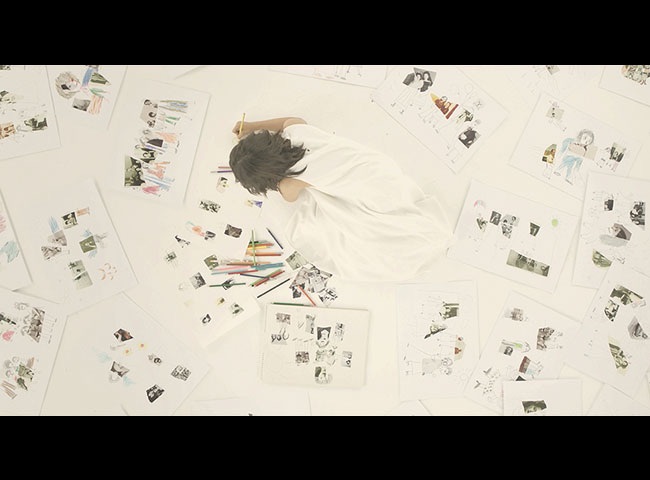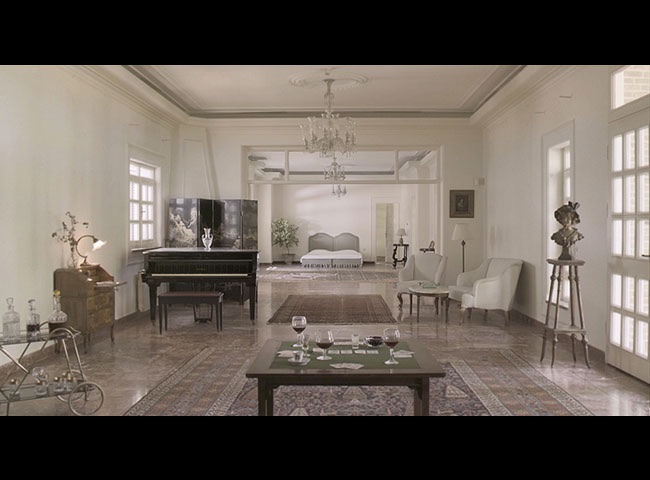Radiographie d'une famille
-
Réalisé par Firouzeh Khosrovani • Écrit par Janne Hjeltnes, Firouzeh Khosrovani
-
Norvège, Iran, Suisse • 2020 • 82 minutes • Couleur
- Réalisation :
Firouzeh Khosrovani - Écriture :
Firouzeh Khosrovani, Janne Hjeltnes - Image :
Mohammad Reza Jahanpanah - Son :
Peyman Yazdanian - Montage :
Farahnaz Sharifi, Jila Ipakchi, Rainer Maria Trinkler - Musique originale :
Peyman Yazdanian
- Production (structure) :
Antipode Films As - Coproduction :
Rainy Pictures, Dschoint Ventschr Filmproduktion AG, Storyline Studios - Diffuseur coprod. :
RTS - Radio Télévision Suisse - Ayant droit :
Antipode Films As
- N° ISAN :
non renseigné
Résumé
La fille d'un père séculier et d'une mère pieuse raconte comment elles coexistent sous un même toit. À travers des photos et des conversations fictives, nous découvrons le changement de la famille au cours des années de révolution en Iran. En utilisant sa propre enfance comme centre du récit, l'auteur nous fait assister à la lutte de pouvoir entre sa mère et son père. Pendant la révolution, leur appartement moderne – décoré avec un art audacieux du père – se transforme progressivement en un espace morne et vide entre les mains de la mère religieuse. Tel un diorama, la maison familiale reflète les événements politiques de l'époque. L’histoire de la famille devient une métaphore centrale, dépeignant le puzzle intrigant qui constitue l’identité iranienne moderne.
“Mother married a photo of Father,” says director Firouzeh Khosrovani in the opening of this deeply personal documentary. She’s not speaking metaphorically though. Her mother Tayi literally married a portrait of Hossein in Teheran—he was in Switzerland studying radiology and was unable to travel back to his homeland for the wedding. The event illustrates the abyss that still exists in their marriage: Hossein is a secular progressive and Tayi a devout, traditional Muslim. But this family history is also a sort of x-ray, laying bare the conflicts of Iranian society in the run-up to, and aftermath of the Iranian Revolution in 1979.
Besides Khosrovani’s commentary, we hear letters being read aloud and recollections of conversations between her parents. At the same time, we see photographs and videos from the family archive. These fragments of intimacy are interspersed with stylized shots of the filmmaker’s parental home, its altering decor and furnishings subtly reflecting each new phase in her parents’ conjugal life—and in Iranian society.
Mot(s)-clé(s) thématique(s)
À propos du film
Sélections et distinctions
- 2024 • Un état du monde • Paris (France) • Sélection
- 2021 • Millenium - Festival du film documentaire • Bruxelles (Belgique) • Compétition internationale & Sélection "Vivre ensemble"
- 2021 • Visions du Réel • Nyon (Suisse) • Grand Angle
- 2021 • FIFF - Festival International de Films de Femmes • Créteil (France) • Compétition Longs métrages documentaire - Mention spéciale
- 2021 • DocsBarcelona • Barcelone (Espagne) • Sélection officielle Panorama
- 2021 • FIPADOC - Festival International Documentaire • Biarritz (France) • Compétition Documentaire international
- 2021 • TIDF - Thessaloniki International Documentary Festival • Thessalonique (Grèce) • Sélection Top Docs
- 2020 • IDFA - International Documentary Festival Amsterdam • Amsterdam (Pays-Bas) • Prix du meilleur long métrage documentaire
Comment avoir accès au film ?
- Sortie en salle
-
Édition DVD
- Il n'existe pas d'édition DVD à notre connaissance
- Accès VOD




